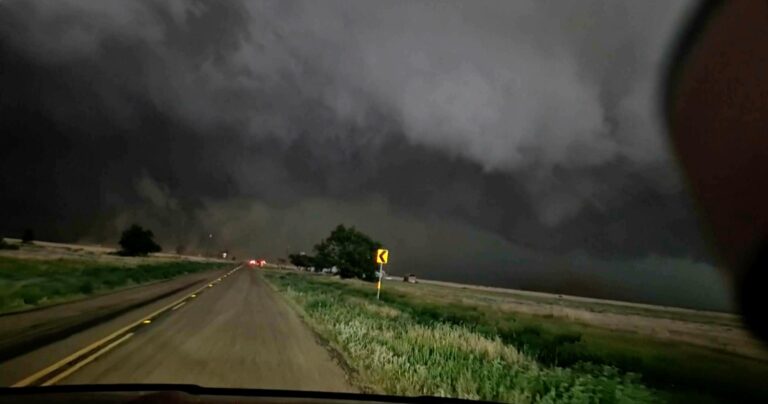Texas Storms Highlight Critical Gaps in Weather Service Capabilities
The recent wave of intense storms sweeping through Texas has brought renewed focus on significant weaknesses within the National Weather Service (NWS) infrastructure. Many analysts attribute these vulnerabilities to budget reductions implemented during the Trump administration. Outdated radar systems and diminished staffing levels hampered the NWSŌĆÖs ability to issue prompt warnings across several affected areas. The absence of timely technological enhancements resulted in delayed alerts, leaving thousands of residents exposed to avoidable dangers.
Meteorologists and emergency officials have pinpointed several pressing issues, including:
- Obsolete radar equipment that struggles to identify rapidly developing storm phenomena
- Cutbacks in funding for essential weather monitoring initiatives that provide real-time environmental data
- Declining workforce numbers, particularly among storm spotters and forecasters critical for localized weather analysis
| NWS Component | Pre-Storm Condition | Effect During Texas Storms |
|---|---|---|
| Doppler Radar Systems | Aging infrastructure with limited upgrades | Slower identification of flash floods and microbursts |
| Staffing | 15% reduction since 2017 | Overburdened forecasters leading to delayed alerts |
| Weather Monitoring Programs | Funding cuts caused program suspensions | Insufficient data to accurately assess storm intensity |
Funding Cuts Exacerbate Risks Amid Escalating Weather Threats
Authorities and weather experts have voiced serious concerns about the long-term effects of sustained budget reductions on the National Weather ServiceŌĆÖs operational effectiveness. The recent Texas storms underscore how limited financial resources have curtailed investments in cutting-edge forecasting technologies and comprehensive staff training programs. This degradation in capacity is directly linked to diminished storm preparedness and increased hazards for the public.
Key challenges resulting from these financial constraints include:
- Delayed issuance of storm warnings, reducing critical evacuation timeframes
- Cutbacks in ground and aerial reconnaissance missions, restricting real-time data collection
- Inability to modernize radar infrastructure, leading to less accurate storm tracking
- Staff shortages that impair continuous monitoring during severe weather episodes
| Area | Effect of Budget Cuts |
|---|---|
| Technology Modernization | Postponed radar system upgrades |
| Personnel | Fewer emergency response staff |
| Research & Development | Reduced studies on climate change impacts |
Impact on Communities and Emergency Management
The severe weather events in Texas have revealed critical shortcomings in emergency response systems, prompting scrutiny of prior policy choices. Critics argue that the National Weather ServiceŌĆÖs diminished funding and workforce during the Trump era have compromised its ability to deliver timely, precise forecasts essential for effective disaster response. Numerous Texas communities experienced delayed alerts and insufficient updates, complicating evacuation procedures and coordination among emergency teams.
Voices from local officials and residents have underscored several major obstacles faced during the crisis:
- Communication breakdowns between meteorologists and emergency responders
- Reduced field observation personnel, limiting accurate data collection
- Overdependence on automated systems that faltered under extreme conditions
| Area of Impact | Result | Community Response |
|---|---|---|
| Alert Timeliness | Storm warnings delayed by up to 30 minutes | ŌĆ£We had insufficient time to prepare safelyŌĆØ |
| Resource Distribution | Emergency services stretched beyond capacity | ŌĆ£First responders were overwhelmedŌĆØ |
| Public Trust | Erosion of confidence in official advisories | ŌĆ£Many turned to social media for updatesŌĆØ |
Urgency for Policy Updates to Boost Weather Forecasting Capacity
The recent Texas storms have sparked vigorous debate among policymakers and meteorological experts about the urgent need to reassess and increase funding for the National Weather Service. The budget reductions enacted under the previous administration, which led to fewer resources and personnel, are now under intense scrutiny for their role in limiting the NWSŌĆÖs ability to deliver prompt and accurate weather alerts. Specialists stress that revitalizing investments in state-of-the-art radar systems, forecasting algorithms, and satellite technology is vital to reduce future risks from extreme weather.
In light of the ongoing challenges, advocates have identified several priority actions to strengthen national weather preparedness:
- Boost federal funding aimed at modernizing forecasting tools and enhancing data processing infrastructure.
- Expand recruitment and retention efforts for skilled meteorologists and emergency coordinators.
- Improve inter-agency collaboration to optimize warning dissemination and public communication.
- Invest in community resilience initiatives to better equip vulnerable populations for disaster response.
| Policy Focus | Current Situation | Recommended Action |
|---|---|---|
| Budget | Cut by 20% | Restore and increase by 30% |
| Technology | Upgrades delayed | Accelerate deployment of new systems |
| Staffing | Shortages persist | Implement targeted hiring programs |
Final Thoughts on Weather Service Funding and Community Safety
As Texas continues to recover from the recent destructive storms, the conversation surrounding the National Weather ServiceŌĆÖs funding and staffing has gained momentum. Critics contend that the budget cuts have weakened the agencyŌĆÖs capacity to issue timely warnings and protect communities effectively. With the frequency and severity of extreme weather events on the rise, the importance of well-funded and technologically advanced weather services cannot be overstated. The unfolding situation in Texas serves as a powerful reminder of the indispensable role that robust meteorological infrastructure plays in safeguarding lives and property nationwide.




